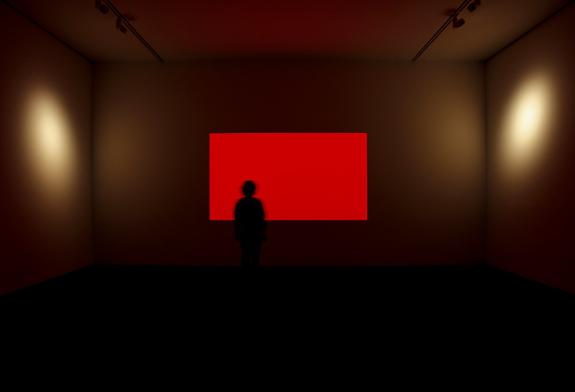

Sections
Highlight

REGINA SOTORRÍO
Monday, 14 December 2020, 18:27
Compartir
James Turrell creates his works without paint or brush, or even a canvas. His background is space and his tool is light, so an exhibition of his works is not a succession of items in a room, it is the room itself as can be seen in Cherry, a display which has just opened at the Picasso Museum.
Turrell is fascinated by light and it is forms the basis of his immersive creations, which play with visual perception to create a hypnotic and disturbing sensation in those who view them.
Cherry is part of this American artist's Space Division Constructions series and is in three parts. After passing through a tunnel to get your eyes used to the dark and widen your pupils, you come to a closed space with a large cherry-coloured rectangle on a black background.
The eye tricks the brain
This is the 'viewing space', and it is here that the eye tricks the brain, making it think it is seeing something it isn't: at first, you seem to be looking at a flat projection on a wall, but no. If you get closer you can 'enter' this red area.
What really lies behind the frame is a room filled with light, nearly three metres deep with concave corners giving an unexpected effect. Turrell calls this the 'sensing space', where light is projected towards the room. As your eye is already used to darkness, the perception of the work changes and you begin to appreciate different nuances.
Thought without words
Ten minutes is the recommended exposure time to this work, and it passes in total and absolute silence. For some it invites calm and inner peace; in others, it can be disconcerting.
As Turrell has said, "My work has no subject, no image, no focus. So without those, what do you see? You see yourself. What I want to do is create an experience of thought without words."
While great artists throughout history have used light to place the focus on a particular area of their work, in his case the light is the picture itself.
The fascinating work of this unconventional artist can be seen at the Picasso Museum until June.
Reporta un error en esta noticia
Necesitas ser suscriptor para poder votar.